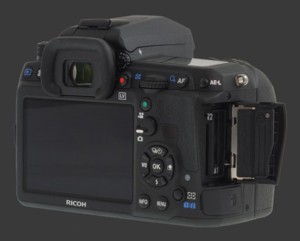Pentax K-3 Review
Pentax K-3 Ricoh Pentax K-3 versus Pentax K-5 IIs
The Pentax K-3 is the first Ricoh DSLR. Luckily, they based it upon the K-5 family of DSLRs which boasts some of the very best ergonomics on the market. The K-5 IIs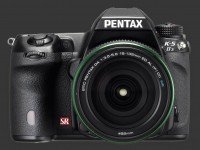
Pentax K-5 IIs also happens to deliver the highest image-quality of any APS-C DSLR to date which puts the bar extremely high for Ricoh's entry into the DSLR market.
Looking at it, there is no doubt the K-3 is a Pentax. Its now-classic layout offers excellent ergonomics and Ricoh has only made minor tweaks to it. Its interface is also strongly reminiscent of the K-5 IIs with both improvements and relatively few minor usability set-backs which are covered further down on this review page.
Those not familiar with the K-5 family should start with the first page of this Ricoh Pentax K-3 review. Otherwise, if you are considering upgrading from a K-5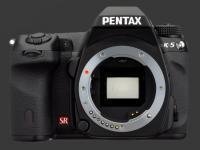
Pentax K-5, K-5 II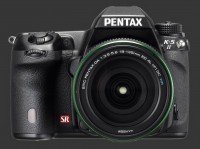
Pentax K-5 II or K-5 IIs
Pentax K-5 IIs, this is the page you are looking for. Should you, for some reason, have passed on a member of the K-5 family, this is the right page too.
Feature Differences between the K-3 and K-5 IIs
The K-3 and K-5 IIs are incredibly feature-rich. While one be forgiven for assuming the K-3 to offer a superset of K-5 IIs features, it does not. Some features of the former did not make it into the K-3:
- Extended Bracketing: The K-5 family can capture a virtual bracket for White-Balance, Saturation, Hue, Key, Contrast or Sharpness. A virtual bracket processes RAW data with 3 different parameters and saves the results as individual JPEG images. The same can be done manually in-camera or by software later on.
- Bulb Release Mode: The release mode for Bulb photography can no longer be set separately for the remote. Now, an option controls if a second press is required to release the shutter or if ends automatically at the end of the first press.
- Card File Numbers: Previous Pentax DSLRs offered a choice of card or sequential numbering. The K-3 offers folder or sequential number. Users of card numbering will therefore be disappointed that the option is no longer available, particularly since the K-3 often creates new folders like when it performs batch RAW conversion, for example. A separate option was added to reset file numbers on-demand which was not necessary before.
- ISO 80: Expanded ISO is gone with the K-3 boasting a 100-51200 range, losing the ISO 80 sensitivity which appears as Expanded ISO on the K-5 IIs. Sadly, this cuts it off from matching the stellar dynamic-range of its predecessors. At least, the full range is usable with Highlight Correction enabled.
Mostly though, the Pentax K-3 adds a number of features compared to its predecessors. Lens corrections have been expanded with on-the-fly vignetting removal and color fringing removal for in-camera RAW conversions. A new Multi-Area AWB option balances colors separately in different areas of images.
The DSLR presents two headline changes. The first is a unique Anti-Alias Filter Simulation based on Shake-Reduction. The K-3 itself has no low-pass filter. It is capable to resolve the finest details let through by a lens. This may cause moire - which is why anti-alias filters are normally there - and so the K-3 can vibrate its sensor to blur light hitting it, just like an anti-alias sensor would. This feature can be set to two levels or turned off. This is yet another use of the Shake-Reduction mechanism which also corrects slanted horizons, shakes dust off, adjusts composition and provides universal image-stabilization. Definitely the most versatile advancement in camera technology!
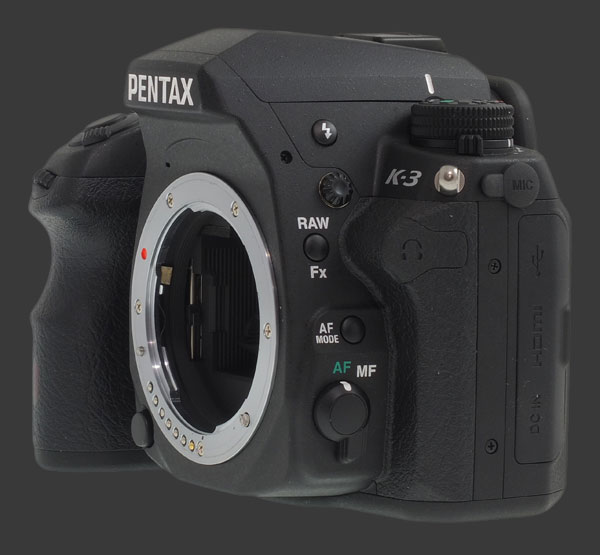
The second headline change is an all-new 27-point SAFOX XI autofocus system with an impressive 25 cross-type points. Compare this to 11 total AF-points. Just like SAFOX X+ on the K-5 II and K-5 IIs, this new AF system is sensitive down to a class-leading -3 EV. These camera can therefore focus in near-darkness.
SAFOX XI comes with new focus controls. An AF-A focus-drive mode which automatically switches between AF-S and AF-C has been added. Focus selection adds Assisted AF-selection too. This lets the user select a single point while the camera uses 9, 25 or 27 points to ensure the subject stays in focus.
A new processor allows the Ricoh Pentax K-3 to shoot even faster, despite its higher resolution. Shooting at 8.3 FPS is possible for up to 60 JPEG images or 22 RAW files. At 3.3 FPS, the K-3 can shoot until memory fills up. Speaking of memory, the K-3 features dual SDXC memory-slots, like the medium-format Pentax 645D. This is an advanced feature that deserves its own box. See the pink one in the right column of this page.
Video features were overhauled. There still is thankfully a dedicated video mode. This time, it is independently set relative to the mode-dial. Oddly, this mode ignores the mode-dial position and its exposure-mode must be selected in the Video menu. This is inefficient and could easily be fixed via a firmware update. Control-dials though can be configured independently for video and stills now.
The K-3 can capture full 1080p video at 30 FPS or 1080i at 60 FPS. 720p can be recorded at 60 FPS for smooth action. While video can be recorded as usual in real-time, the K-3 adds time-lapse video. A handful of cameras already do this but the K-3 is the first one to do so in 4K Ultra-HD (3840x2160). It can also perform Exposure-Fusion for each frame with increments of 1, 2 or 3 EV between frames.
Audio is adjustable in 20 levels. Just like the K-5 IIs, the K-3 offers a mono microphone and stereo input except that it adds a headphone mini-jack to monitor captured audio. An option allows for flicker reduction when filming scenes with fluorescent lighting.
A few minor additions remain: Control-dial rotation is now selectable, Shadow Correction adds automatic mode and the camera explicitly supports WiFi cards, except that it does not recognize those from Toshiba.
Ergonomic Changes
Ricoh carefully adjusted the design of the K-3 to offer a comparable but distinguishable user-experience. Some changes were required for some functions, while others seem to be made to show that this camera is different. Marketing often demands that products be visibly changed which sometimes happens at the user's expense.
The K-3 has slightly changed shape with a deeper indentation on the hand-grip which improves hand-holding of the already excellent grip. On the other side of the lens, the body extends forwards to make room for the new headset mini-jack. In front of it, the RAW/Fx button moved up a little, making room for the new AF-Mode button below it. The AF switch lost a position since the button above now offers more options.
The mode-dial has been revised with separate positions for 3 user modes rather than one position that groups 5 of them. Two lost in favor of direct access. Not better or worse, just a different compromise. Below the mode-dial, the metering switch has been replaced by a lever to enable locking of the dial. Metering selection is done now via the button to delete images right below. The advantage is that metering can be set for each user-mode.
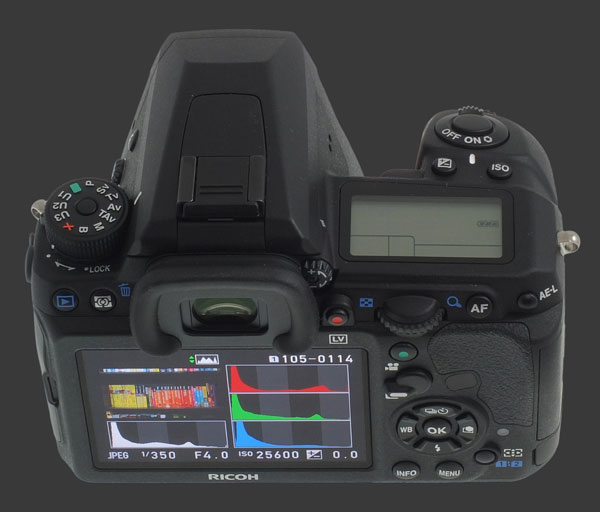
The back of the K-3 shows most changes. Both the OVF and LCD are slightly but visibly larger. Crucially, a 3:2 aspect-ratio for the LCD means that images are shown notably bigger. Resolution at 1 MP is slightly higher but the difference is not noticeable. However, the Pentax K-3 is the only camera to display when an image is shown at 100% magnification on the LCD. Kudos Ricoh! An extremely simple thing that is of tremendous use.
There is a new button that toggles between functions and AF-point selection for the 4-way controller. This button switches between memory cards in Playback mode too. Previously, one had to hold the central OK button for 1 second to toggle between modes.
More shuffling was made on the back above the 4-way controller. The Live-View button was moved way up right next to the viewfinder. Where the AF selector used to be, there is now a switch to toggle between stills and video mode. Entering movie mode automatically starts Live-View which makes complete sense. At that point, the Live-View button becomes the Video-Record button. This is OK but takes a bit of time to sort-out. The AF button now moved to the right of the rear control-dial, pushing the AE-L button further out towards the edge of the camera.
Overall, the new layout has roughly the same usability. Slightly worse for frequent users of AE-L, slightly better for controlling focus. If only the mode-dial would work in Movie mode, it would be clearly better for video. Some customization options were lost though: the Digital-Level or Composition-Adjustment cannot be invoked by the RAW/Fx button and the operation of the shutter-release half-press cannot be set separately for Live-View. A few options have unhelpful names such as AF1 and AF2.
While no statement to this effect was made, the Pentax K-3 appears to have even better weather-sealing than its predecessors. The new body feels just as well built and slightly heavier.
Pentax K-3 Display
Although the rear LCD notably different on the K-3 than on the K-5 IIs, what it shows has changed even more. Menus appear quite different. The foreground is available in 12 colors but the background is always remains awful and a good target for moire!
Display options are very annoying. Instead of cycling through options like every other camera on the planet, it presents a menu which requires shifting your thumb to the 4-way controller to change view. At least, there are display options for the Instant Review and the Digital Preview.
While still not complete, Live-View is improved on this camera. There is some simulation of exposure in Manual mode but it is nor complete nor available in other exposure modes. This can be fixed in firmware, so perhaps one day. The interactive status screen is now accessible in Live-View since OK, instead of Info, now activates MF-Assist. Focus Peaking is available in Live-View.
A unique feature to Pentax, Composition Adjust, is now optionally activated upon entering Live-View. It cannot be set otherwise anymore, so to adjust again, one must exit and return to Live-View. This is odd and very slow and surely one of the biggest usability setbacks of the K-3.
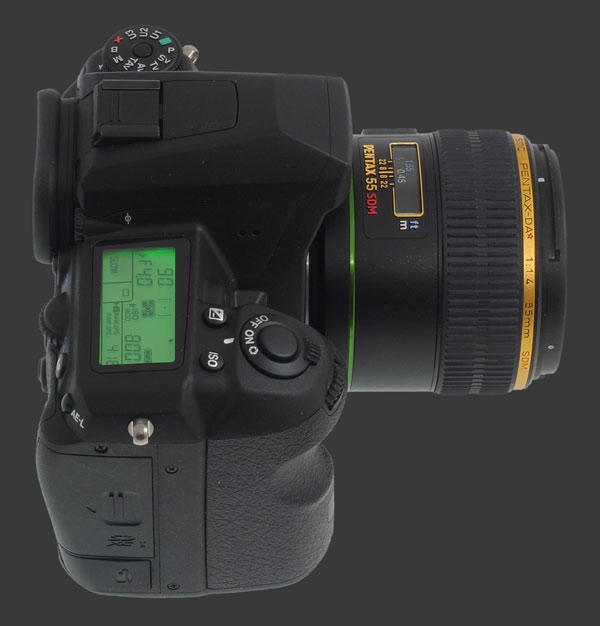
Image-Quality & Performance
The Pentax K-3 features a 24 megapixels CMOS sensor, matching the highest resolution among APS-C digital cameras. This is 50% more megapixels compared to the K-5 IIs which also uses an APS-C size sensor. This implies the Pentax K-3 has smaller pixels which, all else being equal, means higher more and less dynamic-range. As it turns out, all else are not equal and there has been technological advancements in sensor design and manufacture.
Image-quality of the K-3 is excellent and it actually compared well to the K-5 IIs, at least at low ISO sensitivities. This means that up to ISO 400, the newer camera can produce larger prints which are just as clean and crisp. At higher sensitivities though, the new sensor shows more noise which it combats with some noise-reduction, even with it turned off.
At ISO 1600, the extra resolution is pretty much canceled out by noise-reduction, leaving the K-3 usable for the same print sizes as the K-5 IIs. At ISO 3200 and above, the K-5 IIs takes the lead and delivers an unmatched performance which the K-3 cannot compensate for with more megapixels. In low-light, the K-5 IIs remains the very best APS-C DSLR on the market.
The K-3 continues with exemplary support of file formats. It supports both Pentax and Adobe proprietary RAW formats as well direct JPEG images and in-camera TIFF conversion. There are 3 JPEG compression levels, compared to 4 on the K-5 family. Too bad the level removed was the highest-quality one and so the K-3 shows minute compression artifacts which the K-5 IIs does not show at 4 stars. Frankly, we could have done without the lowest instead be we suspect it was a throughput issue since 24 MP images of the K-3 take just 15% more space than 16 MP images from the K-5 IIs. On the other hand, RAW files take 30% more space comparatively.
Processing has been improved. Noise-reduction is generally more gentle now, so it can be set a little higher, particularly at high ISOs where it is needed most. We are happy to report that lens corrections no longer slow down the camera. Lateral Chromatic Aberration and Peripheral Illumination correction can therefore be left on. Of course, Distortion Correction is most be avoided as it affects framing and is destructive to critical sharpness. This has nothing specific to do with the K-3 and is true of all digital distortion correction.
Color and white-balance are equally good on either camera. Metering is also excellent on both with the K-3 offering more stable metering, particularly in high-contrast scenes. All this improved processing comes at a price though with the K-5 IIs turning in 75% more battery-life using exactly the same battery.
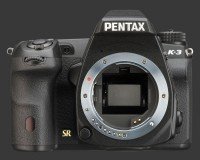 |
Please Support Neocamera
All information on Neocamera is provided free of charge yet running this website is a huge endeavor. Purchases made via affiliate links found throughout the site help keep it running and up-to-date. There is no additional cost to you, so please consider buying via these links to our affilates:
If you found any information on this site valuable and did not purchase via our affiliate links, please considering donating via PayPal:
Any amount will be greatly appreaciated. Thank you for your support!
Pentax K-3 Highlights

Sensor-Size: 24 x 16mm

Actual size when viewed at 100 DPI
| 24 Megapixels DSLR | ISO 100-51200 |
| Pentax K Mount 1.5X FLM | Shutter 1/8000-30s |
| 3-Axis Built-in Stabilization, 3.5-Stop Improvement | Full manual controls, including Manual Focus |
| 100% Coverage Large Viewfinder | Custom white-balance with 2 axis fine-tuning |
| Auto Horizon Correction 2 Axis Digital Level | Spot-Metering |
| Weatherproof down to -10C | Hot-Shoe & Sync-Port |
| Built-in Dust Reduction | Stereo audio input |
| 8.3 FPS Drive, 60 Images | Lithium-Ion Battery |
| 1920x1080 @ 30 FPS Video Recording | Secure Digital Extended Capacity x 2 |
| 3.2" LCD 1 Megapixels |
Dual SDCX Memory
The Pentax K-3 offers dual memory-card slots which is one of the most professional features. The goal is to avoid changing memory-cards in the middle of a shoot or to guard against a potential failure.
One can only choose one of these advantages and the Pentax K-3 offers both options. In Sequential mode, it saves on one at a time. It switches to the second when the first card is full.
In backup mode, the K-3 saves stills simultaneously to both cards. It can save in one format on both cards, two formats on both or one format on each. Videos are only saved to one user-selectable card.
Both memory-card slots support SD, SDHC and SDXC which makes it easier than asymmetric designs. Given that a 256 GB SDXC memory is large enough for over 3200 RAW+JPEG files, size is hardly an issue. After all, the K-3 will run out of battery several times in the process of filling a single such card.
High-end flash cards rarely fail, yet it does happen. Having an instant backup is very attractive but is a pain to manage. This DSLR helps but does not get things quite right:
- Deleting an image from the instant review, deletes it from both cards. This is perfect. If the photographer sees right away that a shot is missed, it can be deleted an wastes no space or time to transfer later on.
- Deleting an image from Playback mode deletes it from one card. When saving RAW+JPEG on one or both cards, the K-3 offers to delete one or both file-formats. However, when saving one format per card, it does not which is unfortunate.
- Playback shows images from both cards but only one at a time. A button toggles between them. It would have been preferable if the camera showed when an image is on one or both cards and allow to operate one both simultaneously.
With dual memory-card slots, involving stills and videos makes things even more of a mess. The camera stops shooting when either card is full and if the photographer does not make the time-consuming effort of deleting unwanted images from both cards, the camera stops shooting while there is still space left.
Even if space is not an issue, one must be careful to download all files without ending up with duplicates. The speeds of cards must match to get the best performance too because a camera can only record at the speed of the slowest one.
Updates
2024.04.03

Fujifilm X-T5 Review
Newest Fujifilm flagship boasting a 40 MP APS-C sensor, 5-axis IBIS with 7-stop efficiency, 15 FPS continuous drive, 6.2K Video capture, dual control-dials and dual SDXC UHS-II slots in a sturdy weatherproof and freezeproof body.
2023.11.20

Best Digital Cameras of 2023
Find out which are the Best Digital Cameras of 2023. All the new Mirrorless Digital Cameras from entry-level to high-end professional.
2023.07.10

Fujifilm X-H2 Review
40 Megapixels APS-C Hybrid Mirrorless Digital Camera with 7-stop IBIS. Fastest shutter ever and 8K video capture. Large builtin EVF with 0.8X magnification and 5.8 MP, plus an Eye-Start Sensor. Packed with features and large number of controls in a weatherproof and freezeproof body.
2023.05.07

Sony FE 20-70mm F/4G Review
Review of the unique Sony FE 20-70mm F/4G lens. The optical zoom of this lens spans ultra-wide-angle and medium focal-length coverage, making it one of the most versatile Full-Frame lenses on the market.
2023.01.15

Huion Inspiroy Dial 2 Review
Review of the Huion Inspiroy Dial 2 tablet, a medium sized drawing surface with dual dials and customizable buttons. Connects via USB-C or Bluetooth 5.0 with Windows, Linux and Android support.
2022.12.08

How to Pack for a Photo Trip
Find out how to pack for a travel photography trip, carry your gear safely while meeting airline regulations.
2022.11.13

Best Digital Cameras of 2022
The best digital cameras of 2022. A short list of the most outstanding models in their respective categories. Choose one for yourself or as a gift.
2022.09.21

Pentax DA* 60-250mm F/4 SDM Review
Review of the Pentax DA* 60-250mm F/4 SDM, the constant-aperture telephoto zoom with the highest zoom-ratio on the market.
2022.09.20

Pentax DA* 50-135mm F/2.8 SDM Review
Review of the Pentax DA* 50-135mm F/2.8 SDM, the lightest professional telephoto zoom native to the K-mount.
2022.09.10

Pentax DA* 11-18mm F/2.8 DC AW Review
Review of the Pentax DA* 11-18mm F/2.8 DC AW, the widest professional ultra-wide zoom native to the K-mount.
2021.11.24

50 Gifts Under $50 For Photographers in 2021
50 Gifts photographers will love. All for under $50 USD. 2021 Edition.
2021.11.17

Best Digital Cameras for 2021
Neocamera shows which are the very best Digital Cameras for 2021 in every category: Mirrorless, DSLR, Premium Compact, Ultra-Zoom and Rugged.











